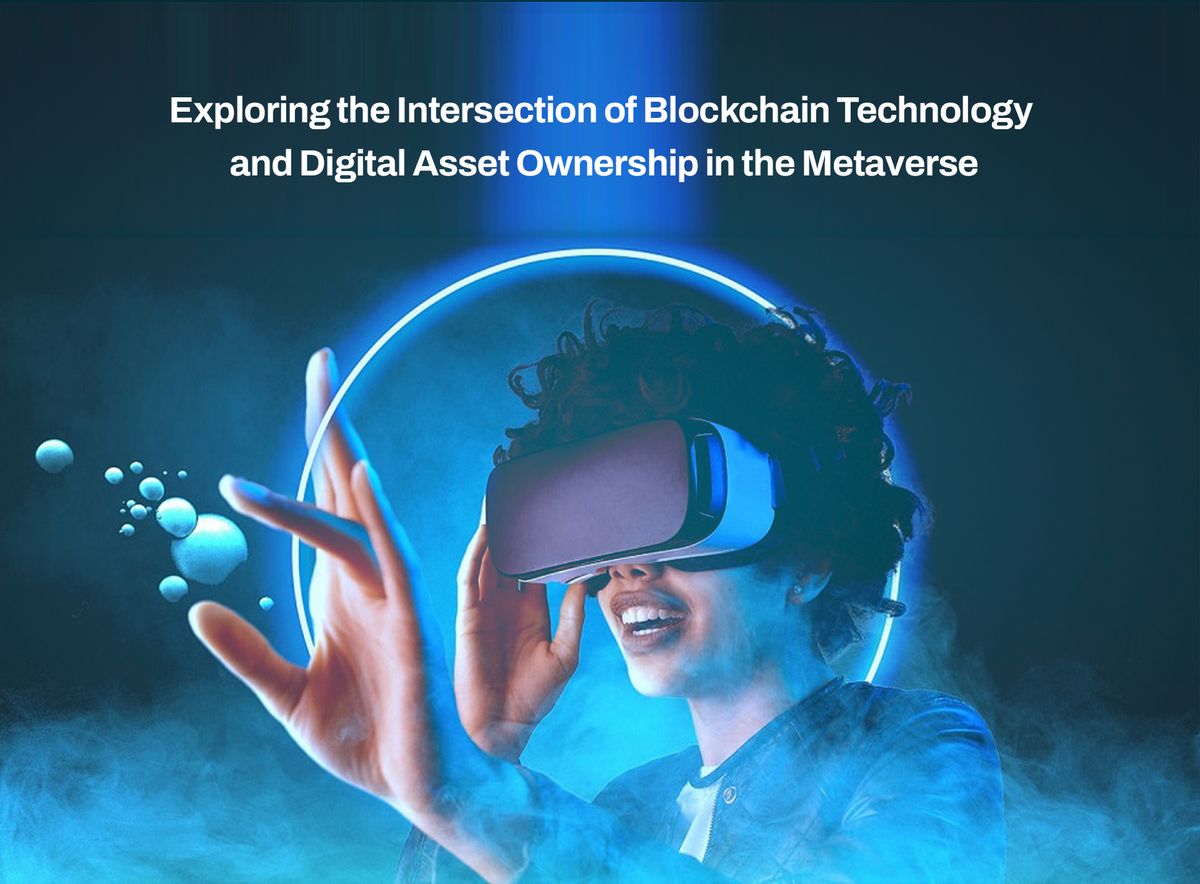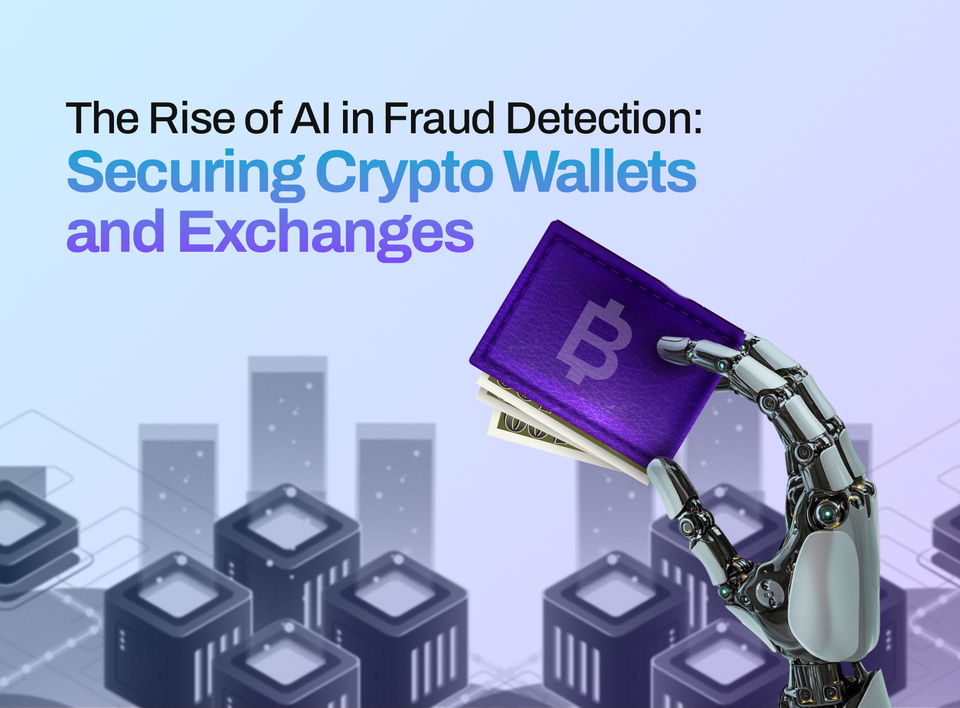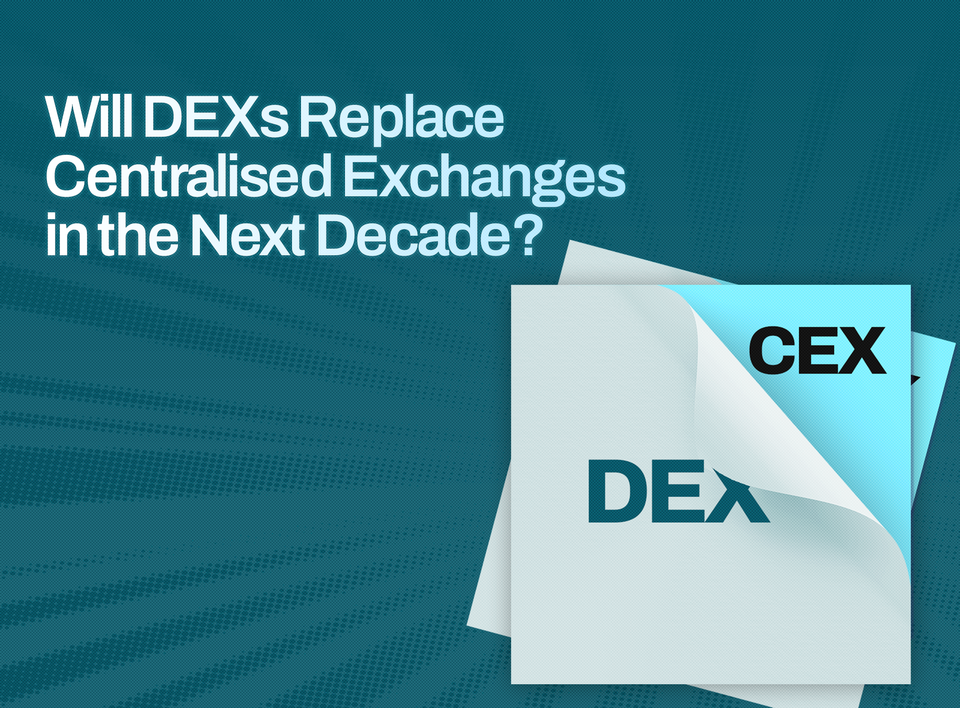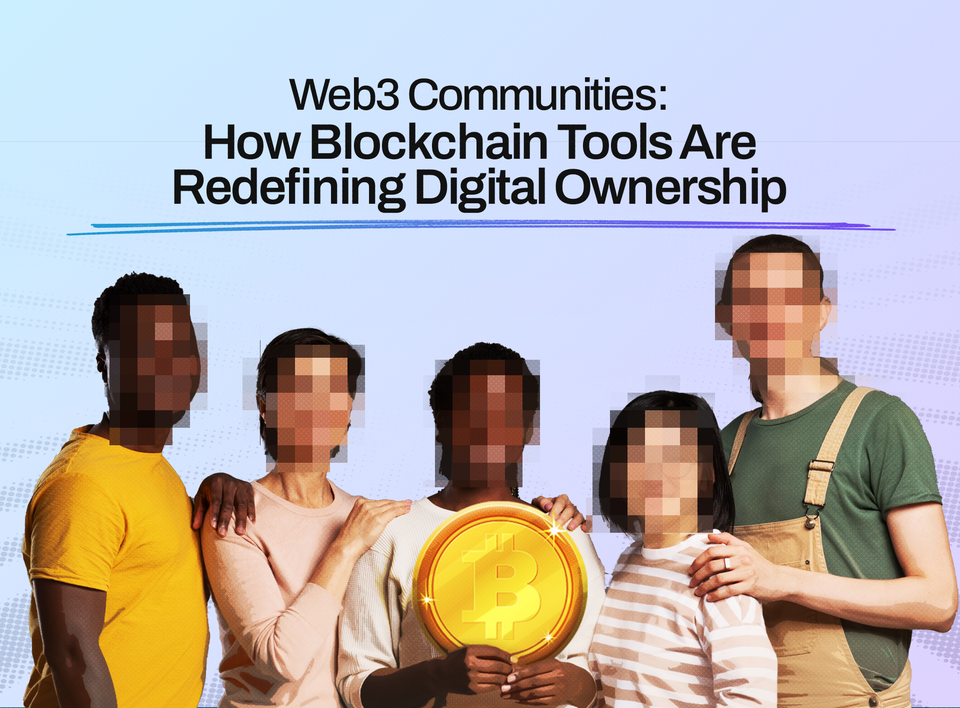Blockchain and Digital Asset Ownership in the Metaverse
Digital assets can range from virtual real estate to in-game items and avatars. Blockchain technology facilitates the ownership and transfer of these assets through smart contracts.

Envisioned to be the next-generation Internet, the metaverse has been attracting enormous attention from both academia and industry.
The metaverse can be viewed as a 3D immersive virtual world where people use Augmented/Virtual Reality (AR/VR) devices to access and interact with others through digital avatars.
The metaverse has become a new norm of social networks and three-dimensional (3D) virtual worlds.
The metaverse aims to bring users 3D immersive and personalised experiences by leveraging many pertinent technologies.
Despite all the great attention and details, a natural question in the metaverse is how to secure its users' digital content and data.
Now blockchain is a promising solution owing to its distinct features of decentralisation, immutability, and transparency.
To better understand the role of blockchain in the metaverse, there is a need to provide an extensive survey on the applications of blockchain for the metaverse.
Understanding Digital Asset Ownership
Digital ownership refers to the rights and authority an individual or organisation has over digital assets, which can include anything from crypto-currencies and digital art to virtual real estate and intellectual property.
Blockchain technology provides a decentralised and secure method to establish and verify ownership, ensuring that records are immutable and transparent.
This allows individuals to control their digital assets without the need for intermediaries, such as banks or governments.
The rapid growth of the internet has profoundly altered traditional businesses, causing some to decline while others are growing.
With the increasing popularity of the Internet, business owners are encouraged to provide services remotely to increase their revenue streams while maintaining their physical offices.
Examples of such businesses include banks, supermarkets, jewellery stores, and automobile spare parts stores.
Blockchain-based businesses offer transparency and immutability features that traditional businesses lack. Transactions are recorded on a blockchain network, which is transparent and accessible to all participants.
Digital Assets in Blockchain
In the metaverse, digital assets can range from virtual real estate to in-game items and avatars. Blockchain technology facilitates the ownership and transfer of these assets through smart contracts, which are self-executing contracts with the terms of the agreement directly written into lines of code.
Digital assets are tokenised representations of real-world assets or digitally native assets that exist solely in digital form.
These assets are typically recorded on a blockchain or distributed ledger, enabling secure ownership, transferability, and programmability.
Digital assets include virtual assets, non-fungible tokens ("NFTs"), and Central Bank digital currencies ("CBDCs"), based on blockchain and distributed ledger technology.
Digital assets already play a key role in providing innovative services in a wide range of areas, including finance, payment, games, sports, the arts, and the metaverse. The ecosystem of digital assets is expected to expand even faster in the future.
Digital assets in the blockchain encompass a wide range of assets with varying use cases and value propositions:
1. Cryptocurrencies
Cryptocurrencies are perhaps the most well-known digital assets, serving as decentralised digital currencies that operate on blockchain networks. Examples include Bitcoin (BTC), Ethereum (ETH), and Ripple (XRP), which enable peer-to-peer transactions, stores of value, and programmable smart contracts.
2. Tokenised Securities
Tokenised securities represent traditional financial instruments such as stocks, bonds, and real estate that are digitised and issued as blockchain tokens. Examples include security tokens representing ownership in real estate properties, shares of company stock, or debt instruments like bonds.
3. Digital Collectibles (NFTs)
Non-fungible tokens (NFTs) are unique digital assets that represent ownership or proof of authenticity of digital collectibles, artwork, and virtual assets. Examples include digital art pieces, in-game items, and virtual real estate parcels, which are traded and owned on blockchain-based platforms.
4. Decentralised Finance (DeFi) Assets
DeFi assets encompass a wide range of financial instruments and protocols built on blockchain networks, offering decentralised alternatives to traditional financial services. Examples include stablecoins, lending protocols, decentralised exchanges (DEXs), and yield farming strategies.
5. Tokenised Commodities
Tokenised commodities represent physical assets such as gold, oil, and agricultural products that are digitised and traded as blockchain tokens. Examples include gold-backed tokens that represent ownership of physical gold stored in secure vaults, providing investors with exposure to commodity markets without the need for physical ownership.
6. Intellectual Property Rights
Digital assets can also represent intellectual property rights such as patents, copyrights, and trademarks, which are tokenised and recorded on blockchain networks. Examples include digital certificates of authenticity for creative works, royalty tokens for music and media rights, and licensing agreements enforced through smart contracts.
7. Tokenised Real Estate
Tokenised real estate assets represent ownership or fractional ownership in real estate properties, allowing investors to access real estate markets with lower barriers to entry and increased liquidity. Examples include digital tokens representing shares of commercial properties, residential real estate portfolios, and real estate investment trusts (REITs).
8.Carbon Credits and Environmental Assets
Digital assets can also represent environmental assets such as carbon credits, renewable energy certificates (RECs), and biodiversity tokens, which are tokenised and traded on blockchain networks. Examples include carbon offset tokens that represent reductions in greenhouse gas emissions, incentivising sustainable practices, and environmental conservation efforts.
Digital Asset Ownership in the Metaverse
The metaverse is increasingly being shaped by decentralised virtual worlds, where blockchain technology enables community governance and economic systems.
These worlds operate independently of any central authority, fostering a more open, democratic, and user-driven digital environment.
As users navigate through different virtual worlds, a reliable and verifiable digital identity becomes crucial.
Blockchain provides a decentralised solution for managing digital identities, giving users control over their personal information and ensuring that their identities are secure and portable across various platforms.
In the metaverse, digital assets can range from virtual real estate to in-game items and avatars.
Blockchain technology facilitates the ownership and transfer of these assets through smart contracts, which are self-executing contracts with the terms of the agreement directly written into lines of code.
The Emergence of Virtual Real Estate
In the physical world, real estate has long been a cornerstone of wealth, status, and identity.
Owning land or property not only provides a place to live or work but also serves as a significant investment and a symbol of personal and economic achievement.
As we venture deeper into the digital age, the concept of real estate is being reimagined in the meta-verse, where virtual real estate is emerging as a highly valuable and sought-after asset.
Virtual real estate refers to parcels of land or properties within a digital, interactive environment known as the metaverse.
Just like in the physical world, these virtual properties can be bought, sold, and developed. What makes virtual real estate particularly fascinating is its potential for creativity and commerce in a realm where traditional physical limitations do not apply.
Several pioneering platforms have laid the groundwork for this burgeoning market, including Decentraland, The Sandbox, and Cryptovoxels.
These platforms allow users to purchase, develop, and monetise virtual land, all secured by blockchain technology.
Key Platforms in Virtual Real Estate
1. Decentraland: One of the most well-known virtual real estate platforms, Decentraland, allows users to create, explore, and trade virtual worlds. Built on the Ethereum blockchain, Decentraland parcels are represented as non-fungible tokens (NFTs), providing verifiable ownership and enabling a thriving marketplace for virtual land.
2. The Sandbox: The Sandbox is another prominent player, offering a dynamic and user-generated metaverse where participants can build, own, and monetise their gaming experiences. It uses blockchain to secure ownership of virtual land and assets, facilitating a vibrant ecosystem of creators and entrepreneurs.
3. Voxels (Formerly known as Cryptovoxels): Voxels is a virtual world built on the Ethereum blockchain, featuring a pixelated, voxel-based aesthetic. Users can purchase land parcels, build structures, and create interactive experiences, all secured through blockchain technology.
Metaverse vs Web3: What's the Difference?
Another important concept related to blockchain and the metaverse is Web 3. The words metaverse and Web3 have started to be used interchangeably.
However, even though they both focus on developing a better, future internet, these are two extremely different concepts.
The metaverse focuses on how users will experience the internet of the future, while Web3 is centred on who will own and control it.
Its major goal is to solve the shortcomings of Web2 Internet, like data breaches and data privacy issues. Web3 will leverage blockchain to enable decentralisation and let users own and control their data.
While some still argue that Web3 is a major building block for the metaverse, it is only one component of a greater sum.
How Blockchain Empowers Ownership in the Virtual World of the Metaverse
1. Tokenisation and Asset Management
Tokenisation is the process of converting physical or digital assets into digital tokens on a blockchain. This innovation facilitates fractional ownership, improves transferability, and enhances transparency in asset management. For example, real estate can be tokenised to allow multiple investors to own a share, making property investment more accessible. The integration of smart contracts further streamlines transactions, automating processes and reducing costs associated with ownership transfers.
2. Decentralisation
Unlike traditional centralised systems, blockchain operates on a peer-to-peer network, eliminating the need for intermediaries such as banks or governments. This decentralisation ensures that digital assets can be owned and transferred directly between parties without the risk of censorship or interference.
3. Transparency
Every transaction made on the blockchain is visible to all participants in the network. This transparency enhances trust and security, as it allows anyone to verify the authenticity and ownership of digital assets at any time.
4. Verifiable Ownership and Provenance
Blockchain technology provides a secure and verifiable way to prove ownership of digital assets within the metaverse. Non-fungible tokens (NFTs) are used to represent unique digital assets such as virtual real estate, artwork, collectibles, and in-game items. These tokens are stored on blockchain networks, ensuring ownership and provenance can be easily verified.
5. Smart Contracts
Smart contracts, which are self-executing code on the blockchain, enable automated and secure transactions within the metaverse. Once deployed, smart contracts execute automatically when predetermined conditions are met, ensuring transparency, efficiency, and immutable record-keeping for all transactions within the metaverse's immersive experience.
6. Fractional Asset Ownership
Blockchain technology allows for fractional asset ownership, where digital assets can be owned by thousands of people. This is facilitated through the use of decentralised autonomous organisations (DAOs) in the metaverse, where people can join and take part in the organisations' operations.
Blockchain Platforms used in redefining Digital Asset Ownership in Virtual World
Many developers have applied the concept of the metaverse to real blockchain projects. These are some of such projects:
Decentraland
Decentraland is a decentralised virtual reality platform powered by the Ethereum blockchain. Users can purchase, create, sell, and experience content and applications inside it using its native cryptocurrency, MANA.
- Key Features: Allows users to buy and sell virtual land (LAND) parcels, which they can then develop into unique experiences, such as games, art galleries, or social hubs. The ownership of these lands is securely recorded on the blockchain, ensuring transparency and preventing fraud.
The Sandbox
The Sandbox is a virtual world where players can own, create, and monetise their gaming experiences on the Ethereum blockchain using SAND, its utility token.
- Key Features: Offers a sandbox environment where users can create, share, and monetise their own 3D content and gaming experiences. It has also partnered with major brands and artists, integrating real-world IP into the metaverse.
Voxels (Formerly known as Cryptovoxels)
Voxels is a decentralised virtual world on the Ethereum blockchain where users can buy, sell, and manage virtual real estate.
- Key Features: Similar to Decentraland, Voxels allows users to purchase virtual plots of land, known as voxels, and develop them according to their creativity. Ownership of these voxels is represented by ERC721 tokens, ensuring uniqueness and ownership rights.
Axie Infinity
Axie Infinity is a blockchain-based game centred around collecting, raising, and battling fantasy creatures called Axies. Players can earn tokens as rewards, which can be traded on the marketplace.
- Key Features: Incorporates a play-to-earn model where players can earn the in-game currency, Smooth Love Potion (SLP), and the governance token, AXS, by playing the game. Axies themselves are represented as NFTs on the Ethereum blockchain, allowing for true ownership and traceability.
Alien Worlds
Alien Worlds is a decentralised metaverse built on the WAX blockchain, featuring a collection of play-to-earn games.
- Key Features: Offers a variety of games where players can earn TRX, the native cryptocurrency of the Tron network, and WAX tokens. The platform emphasises interoperability and aims to connect various blockchain ecosystems.
Bloktopia
Bloktopia combines blockchain technology, virtual reality, and augmented reality to offer a unique metaverse experience.
- Key Features: Provides an immersive experience where users can engage with blockchain-related activities and educational content. It aims to bridge the gap between traditional education and the exciting world of blockchain technology.
Enjin
Enjin is a unique implementation of the metaverse concept. It not only operates on the blockchain but also offers opportunities for developing software and SDK for the easy creation of NFTs.
- Key Features: It involves a secure Ethereum-based NFT development platform. The system also ensures digital assets are highly liquid by converting Enjin NFTs into ENJ metaverse tokens. As ENJ tokens are scarce, they retain their value and digital collectability.
The Metaverse Ecosystem
In the metaverse, blockchain enables unique forms of digital ownership through non-fungible tokens (NFTs). NFTs represent ownership of unique digital items, such as virtual art or real estate, and can be bought, sold, or traded securely.
This has transformed how creators and consumers interact with digital content, allowing for direct sales and ongoing royalties for creators when their work is resold.
The metaverse and NFT landscape are brimming with possibilities. Here's a glimpse into the future:
Interoperability: Standardised protocols will allow NFTs to be seamlessly used across different metaverse platforms, fostering a truly interconnected virtual world.
Metaverse Identity: NFTs could play a crucial role in establishing user identities within the metaverse, allowing users to own and manage their digital avatars and reputations.
Decentralised Governance: DAOs empowered by NFTs could play a significant role in shaping the governance and development of the metaverse.
Conclusion
There are many differing visions for the metaverse concept, yet almost all experts agree that it is a niche with a great deal of promise.
Blockchain is a necessary technology for the main elements of the metaverse, which include digital proof of ownership, money transfer, governance, accessibility, and interoperability.
Blockchain technology's inherent features of decentralisation, transparency, and the use of smart contracts and tokenisation make it a powerful enabler of digital asset ownership in the metaverse.
It provides a secure, immutable, and efficient way to create, own, and trade digital assets, transforming the concept of property and value in the virtual world.
As the metaverse continues to evolve, blockchain will likely become even more integral to managing digital assets and interactions within this emerging space.
Disclaimer: This article was written to provide guidance and understanding. It is not an exhaustive article and should not be taken as financial advice. Obiex will not be held liable for your investment decisions.



